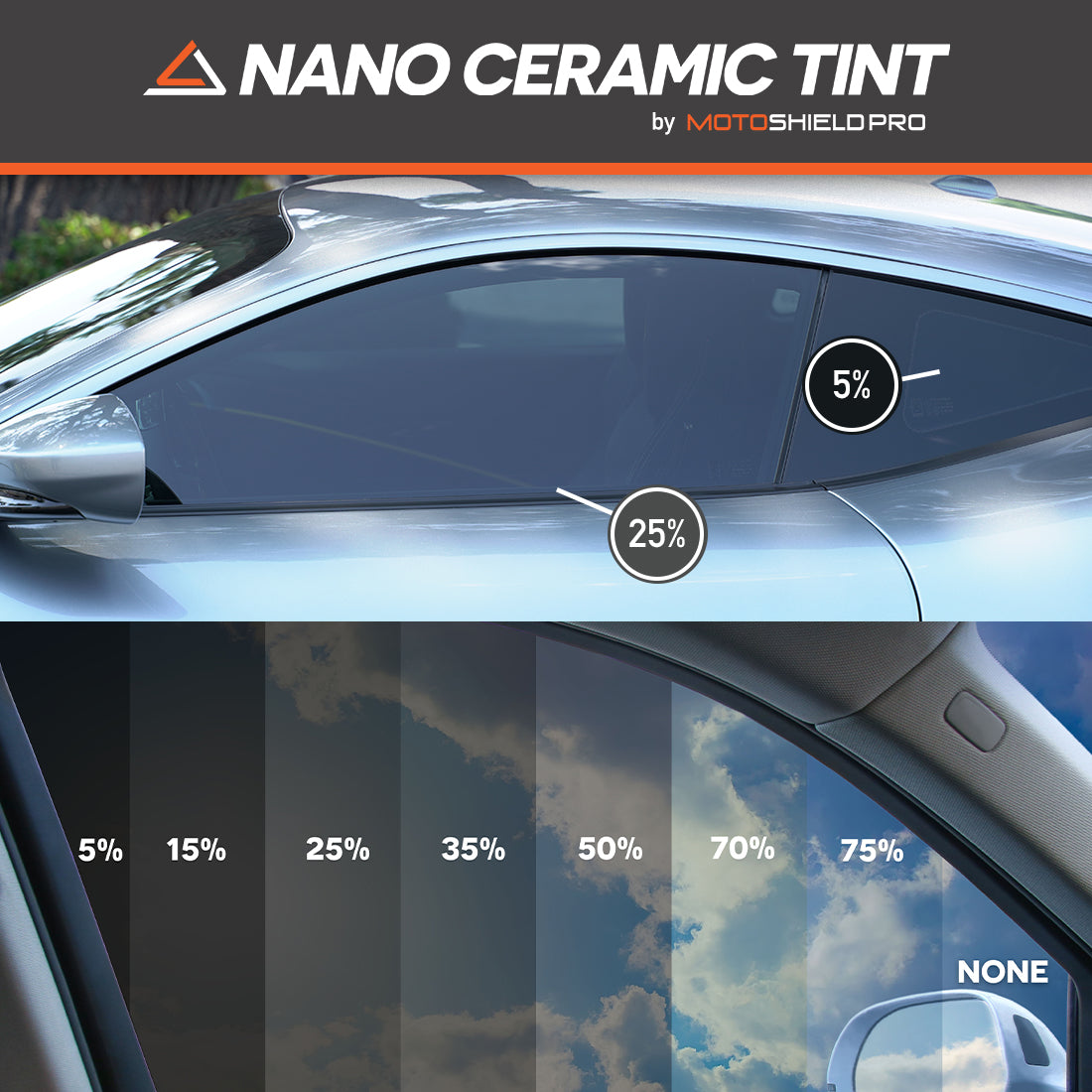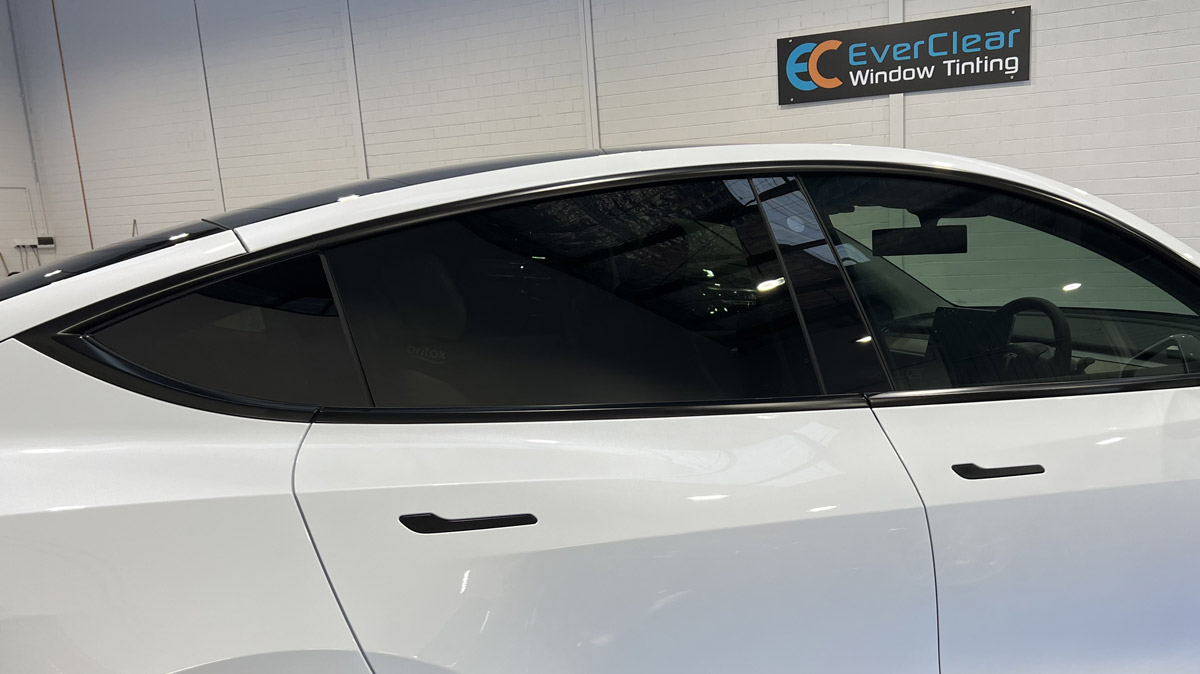Window Tinting Options: Discover the Right Shade for Your Design and Demands
Picking the appropriate window tint for your car includes a cautious consideration of various elements, including personal aesthetic appeals, practical demands, and legal limitations. With options varying from light tintss that offer marginal personal privacy to darker tones that improve seclusion, the choices can be overwhelming. window tinting. Understanding the effects of noticeable light transmission (VLT) percents and the advantages of different products is vital in making an educated choice. As you contemplate your options, you might question how these elements interplay to create not simply a look, but a customized experience when driving.
Comprehending Window Tinting Levels
When considering window tinting, it is crucial to comprehend the numerous levels of tint offered, as they significantly impact both looks and performance. Window tinting is categorized based on Noticeable Light Transmission (VLT) percentages, which show the amount of light enabled to travel through the glass. The VLT portion can vary from very light (over 70%) to very dark (listed below 5%)
The primary levels of tint consist of clear, which provides UV defense without altering exposure; light tint (over 50% VLT), which a little decreases glow while keeping exposure; medium tint (around 35% VLT), striking an equilibrium in between privacy and light transmission; and dark tint (below 20% VLT), providing substantial privacy and warm reduction but limiting outside visibility.
Understanding these degrees is vital as they can impact driving safety, lawful conformity, and individual comfort. Furthermore, regional policies frequently determine permitted tint levels, differing by state or district. Prior to picking a color, it is suggested to study and ensure adherence to these regulations while considering personal preferences for style and functional benefits.
Popular Tint Tone Explained

Among one of the most prominent options is the traditional dark tint, generally varying from 20% to 5% VLT (Noticeable Light Transmission) This shade uses optimum privacy and a smooth, innovative look. It properly blocks UV rays and warm, making it ideal for sunny environments, though it might limit exposure at evening.
Alternatively, lighter shades such as 35% or 50% VLT supply an extra refined appearance while still using some level of personal privacy. These shades are ideal for those looking for an equilibrium in between looks and capability, as they enable much better exposure and follow different lawful criteria.
Another emerging preference is the ceramic tint, which can be available in a range of tones - window tinting. It uses premium warmth rejection and UV protection without considerably modifying the lorry's look

Legal Laws for Window Tinting
Comprehending the lawful policies bordering window tinting is crucial for vehicle proprietors looking to personalize their cars. Each state in the united state has specific legislations governing the darkness or lightness of window tintss, frequently determined by Visible Light Transmission (VLT) percentage. VLT refers to the amount of light that can pass via the movie and the glass integrated.
In several states, guidelines determine various VLT percentages for numerous windowss, including front windshields, side windowss, and back windowss. Some states might permit a tint of 70% VLT for windshields while permitting darker tintss for rear windowss. In addition, particular states have restrictions on reflective tintss, which can create glare for other vehicle drivers.
Failing to comply with these policies can result in penalties, mandated elimination of the tint, and raised insurance premiums. Vehicle owners ought to consult regional legislations or state DMV internet sites to guarantee they are within lawful restrictions prior to continuing with installment. Recognizing these laws not just aids stay clear of lawful effects however likewise makes sure a risk-free driving experience.
Advantages of Different Tint Materials
Discovering the advantages of numerous tint materials reveals significant advantages that can enhance anchor both the performance and aesthetic charm of an automobile. Each material provides distinct characteristics matched to details demands and preferences.
Dyeded window films are popular for their affordability and capacity to lower glow. Metalized films, on the various other hand, offer superior warmth reduction and UV defense due to their reflective properties.
Ceramic window films represent a costs option, supplying extraordinary heat denial while maintaining presence. They are non-metallic, thus preventing any kind of signal disruption, and are very durable, standing up to scratches and fading gradually. Additionally, ceramic films do not have dyes, guaranteeing a longer-lasting look.
Lastly, crossbreed films combine aspects from dyeded and metalized options, using a well balanced performance in regards to warmth rejection, glare decrease, and cost. Each tint material serves distinct objectives, permitting car proprietors to pick the best fit for their way of living and visual choices, eventually boosting their driving experience.
Picking the Right Tint for You
Finding the right window tint includes considering various aspects, consisting of individual choices, vehicle type, and regional laws. Initially, assess your personal style and preferred level of privacy, as these will certainly assist your selection of tint shade. Darker tintss offer boosted personal privacy however might not be suitable for all motorists, particularly those that prefer an even more open feeling inside their lorry.
Next, consider your automobile kind, as the dimension and shape of windowss can influence the effectiveness of certain tintss. Bigger windowss may profit from reflective tintss that minimize glare while smaller windowss could be extra matched to dyeded films that offer refined aesthetics.
Additionally, it's essential to examine regional regulations pertaining to important site window tinting. Several states impose restrictions on the allowed darkness and reflectivity, particularly for front windowss. Compliance with these regulations is necessary to avoid penalties and ensure security.
Last but not least, assess the tint material that ideal matches your needs. Alternatives include dyeded, metalized, ceramic, and crossbreed films, each offering one-of-a-kind benefits associating with warm rejection, UV defense, and longevity. By thinking about these factors, you can confidently pick a window tint that straightens with your style and practical demands.
Conclusion
To conclude, selecting the suitable window tint requires cautious factor to consider of different elements, consisting of VLT percents, regional regulations, and the desired aesthetic. Different tint materials provide distinct benefits that can enhance car convenience and protection. By extensively understanding the available choices and site here straightening them with individual preferences and functional demands, one can accomplish an optimal balance in between style and functionality in window tinting selections.
Selecting the suitable window tint for your car includes a cautious consideration of numerous factors, consisting of individual aesthetics, functional demands, and legal limitations. Each state in the U.S. has specific laws governing the darkness or lightness of window tintss, commonly determined by Visible Light Transmission (VLT) portion. Some states may enable a tint of 70% VLT for windshields while allowing darker tintss for rear windowss.Finding the right window tint includes thinking about various aspects, including personal preferences, lorry kind, and regional policies.In conclusion, picking the ideal window tint calls for mindful consideration of different elements, including VLT portions, neighborhood laws, and the wanted aesthetic.